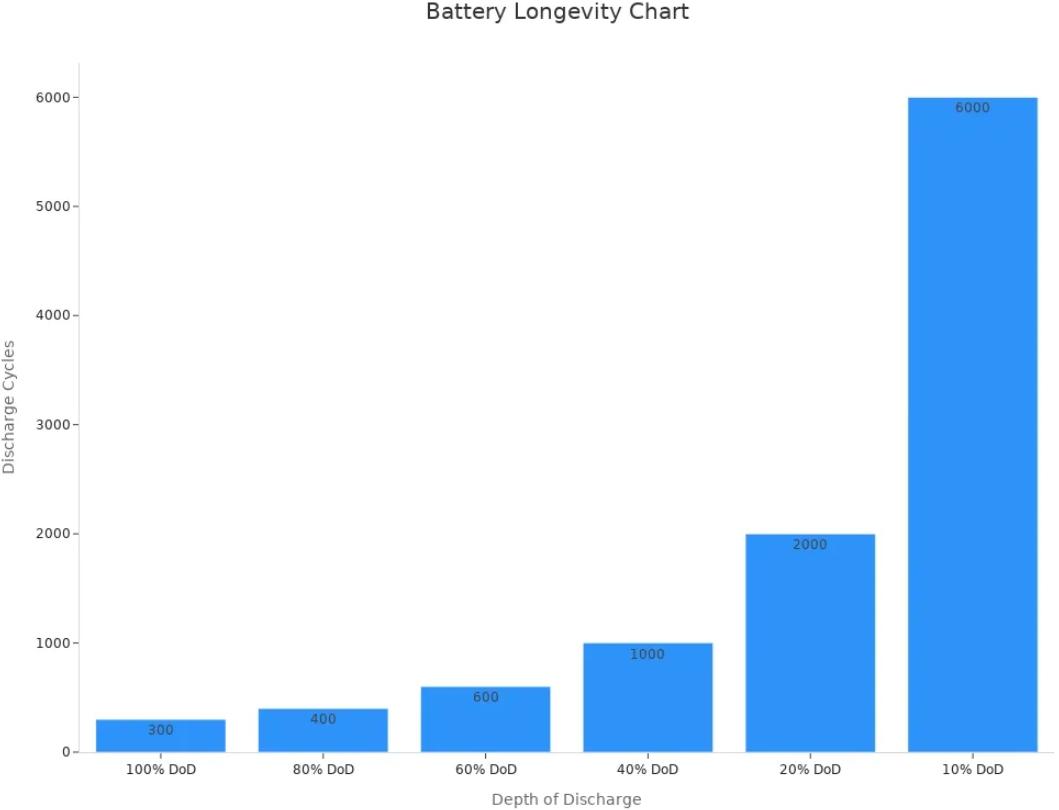
Minimizing self-discharge and preserving lithium battery performance is essential for industrial applications such as robotics, medical devices, and instrumentation systems. Lithium-ion batteries typically lose 2-8% of their charge per month, which accelerates degradation and raises replacement costs. To address this, experts recommend storing batteries at 40-50% charge in a cool, dry environment (15℃ to 25℃). This approach not only maintains operational readiness but also extends battery lifespan.
-Maintain 40-50% Charge: Reduces energy loss and prolongs battery life.
-Optimal Storage Conditions: Store in a cool, dry location (15℃–25℃) to prevent damage and ensure safety.
-Regular Monitoring: Check charge levels every 3–6 months to avoid deep discharge and sustain performance.
1.1 Understanding Self-Discharge in Lithium Batteries
Self-discharge refers to the gradual loss of charge in lithium-ion batteries when idle, caused by internal chemical reactions. While all batteries experience this, lithium-ion variants lose 2-8% monthly, influenced by temperature, chemistry, and storage conditions. For example, NMC lithium batteries (160–270 Wh/kg energy density) exhibit higher self-discharge rates than LiFePO4 batteries (100–180 Wh/kg), which offer superior cycle life (2,000–5,000 cycles).
A study in the Journal of Power Sources underscores the importance of classifying lithium-ion cells by self-discharge rates to optimize performance.
1.2 Impact on Industrial Applications
In critical sectors like healthcare and robotics, self-discharge can compromise reliability. Extended storage without precautions may lead to deep discharge, causing irreversible damage. For instance, medical devices depend on consistent power for patient safety, making proper storage practices vital.
To mitigate risks:
-Store batteries at 40-50% charge.
-Select appropriate chemistries (e.g., LiFePO4 for long-term industrial use).
2.1 Benefits of 40-50% Charge
Storing lithium batteries at 40-50% charge minimizes electrode stress and chemical degradation. Research from Chalmers University shows that maintaining 50% charge can extend lithium-ion vehicle battery lifespan by 44–130%. Key advantages include:
-Reduced Electrode Strain: Preserves structural integrity.
-Overvoltage Prevention: Avoids thermal runaway risks.
-Extended Shelf Life: Slows capacity fade.
Tip: Use a battery management system (BMS) to monitor charge levels during storage.
2.2 Risks of Improper Storage
Overcharging: Exceeding voltage limits generates excess heat, triggering thermal runaway and electrolyte decomposition.
Deep Discharging: Dropping below safe charge levels damages electrodes and accelerates capacity loss.
Study | Key Findings |
Rumpf et al. (2015) | Higher depth of discharge (DoD) accelerates cathode degradation. |
Yang et al. (2019) | Deep discharge cycles increase mechanical stress, hastening capacity loss. |
Keil & Jossen (2017) | Limiting DoD extends battery lifespan by reducing degradation. |
3.1 Temperature Guidelines
-Avoid Extremes: Freezing temperatures cause lithium plating; high heat accelerates aging.
-Optimal Range: 15°C–25°C minimizes harmful chemical reactions.
Tip: Use temperature-controlled storage and train staff on battery protocols.
Temperature Impact | Effect |
Every 1℃ above 25℃ | Reduces battery life by ~2 months. |
At 45℃ | Risk of thermal runaway increases. |
3.2 Humidity and Environmental Controls
-Moisture Risks: Humidity reacts with electrolytes, forming hydrofluoric acid (HF) and degrading the SEI layer.
-Best Practices: Use dehumidifiers, ensure ventilation, and avoid direct sunlight.
3.3 Storage Location Best Practices
-Inspect batteries for damage before storage.
-Store in ventilated, shaded areas on racks to prevent heat buildup.
-Prioritize low-humidity environments for precision devices.
4.1 Regular Charge Checks
Monitor state of charge (SOC) every 3–6 months and recharge to 40-50% if needed.Predictive maintenance tools (e.g., machine learning algorithms) enhance diagnostics and SOC estimation.
4.2 Periodic Cycling
For long-term storage:
-Discharge to 30-40% and recharge to 50-60% every 6 months.
-Use a BMS to avoid full discharges or overcharging.
4.3 Safe Handling Procedures
-Inspect for swelling, corrosion, or damage during maintenance.
-Follow manufacturer guidelines for charging and ventilation.
Effective storage and maintenance of lithium-ion batteries—maintaining 40-50% charge, optimal temperature/humidity, and regular inspections—significantly reduce self-discharge and extend lifespan. For industries relying on these batteries,adopting these practices ensures reliability, safety, and cost savings by minimizing premature replacements.
Previous:REPT BATTERO Showcases Cutting-Edge Battery Innovations at CIBF2025